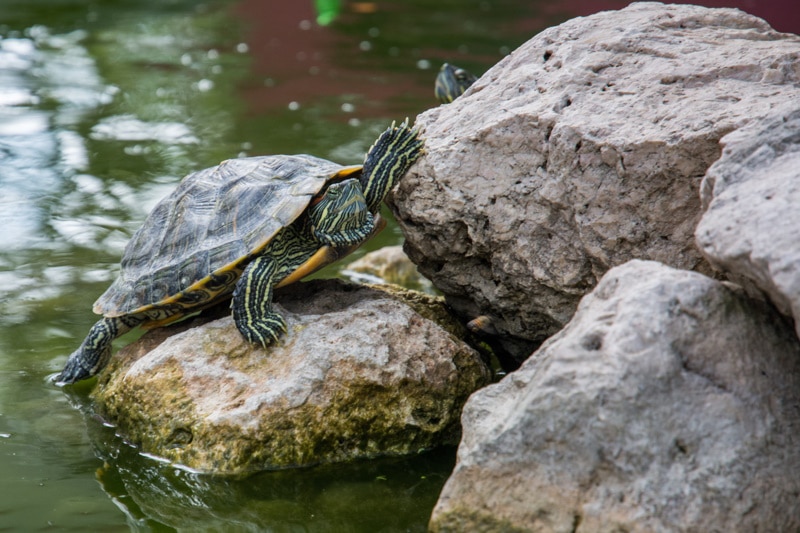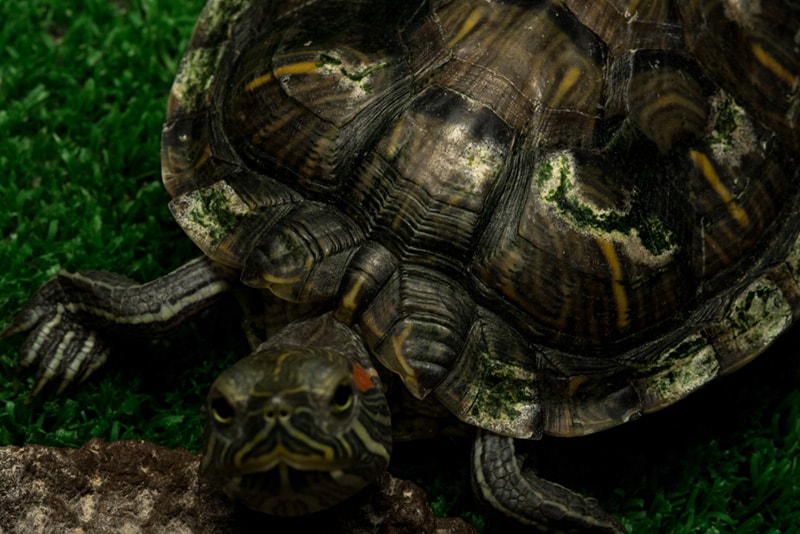How Long Can Turtles Stay Out of Water? Vet-Reviewed Facts
Updated on
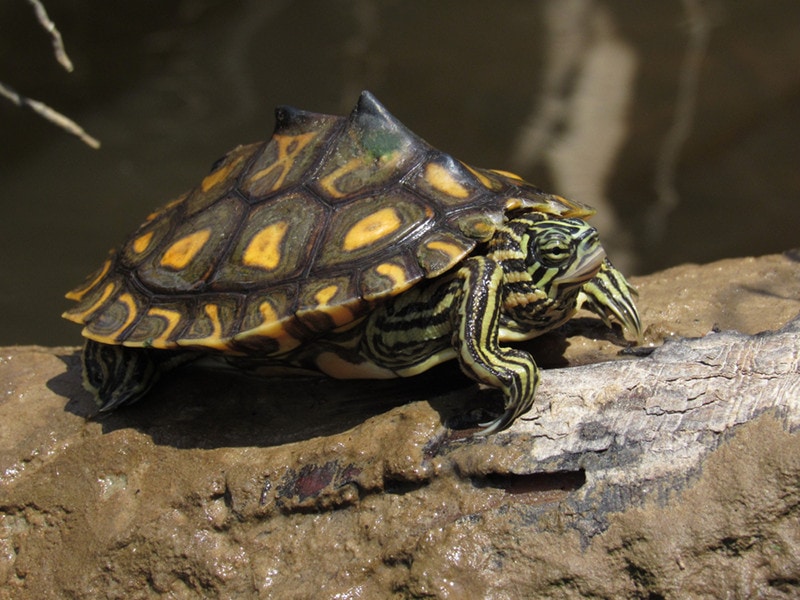
Since many pet turtles are aquatic or semi-aquatic animals, they need water for survival. But if you have a pet turtle, you might need to keep it outside water to clean its enclosure or transport it to a new place.
How long is it safe for turtles to be out of water? Typically, turtles can spend 6 to 8 hours outside water daily. They might come out to get oxygen, bask, or find food.
Remember that these are general durations that will differ based on certain factors. Let’s look at these factors, along with the importance of water for turtles.
The 5 Factors That Determine How Long Can Turtle Stay Outside Water
Many factors impact the safe duration for a turtle to stay outside water. Here are some of them:
1. Climate
In general, the hotter it is, the smaller the amount of time a turtle will be able to stay out of the water before getting dehydrated.
Cold weather will also affect the amount of time a turtle can spend out of the water, and many freshwater turtles submerge themselves underwater to survive the winter. Turtles are cold-blooded, which means their internal body temperature is dependent on the environment.In cold temperatures the temperature in the water is more stable, and usually warmer, than the air temperature.
Humidity is another important factor. A high humidity level will allow a turtle to spend more time out of the water as well.
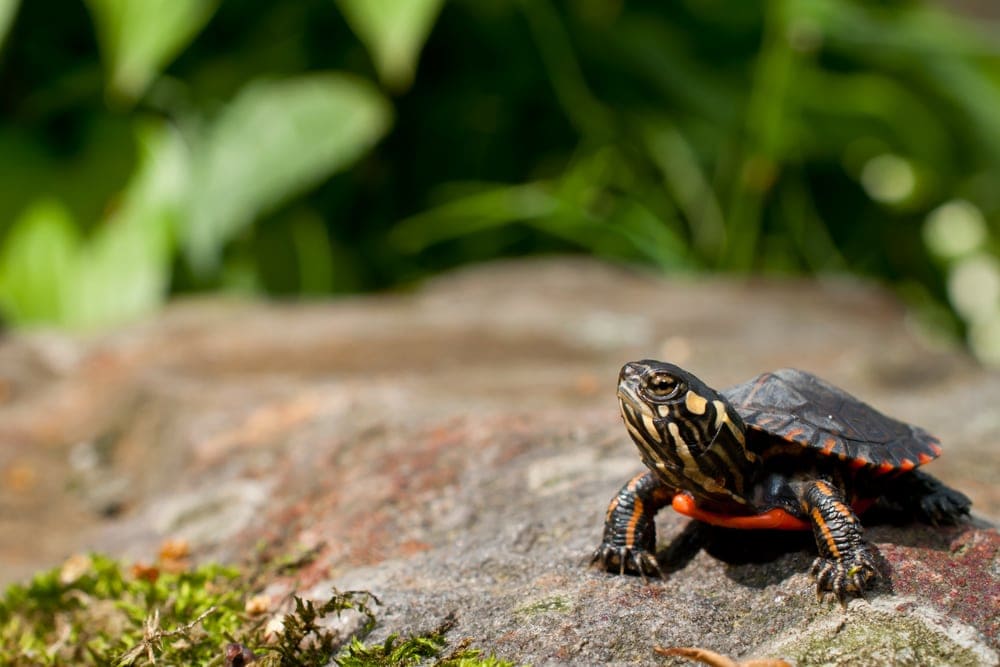
2. Age
A turtle’s age will also determine how likely it is to stay in water for long periods. A young aquatic turtle will spend more time in the water. Meanwhile, adult turtles can survive outside water for a longer time.
3. Safety
In their natural habitats, turtles are aware of their surroundings and change their aquatic habits based on predators in the area. But when you keep a turtle as a pet, you must ensure it has a safe enclosure where it can come outside water to bask.
If the turtle feels threatened by your dog hovering over its tank or a child tapping on the glass, it might go back into the water upon sensing danger.

4. Oxygen Requirements
When turtles hibernate in water, their bodies do not need as much oxygen and nutrition as in summer. But in higher temperatures, turtles have to come outside water for longer periods to meet their oxygen requirements.
Again, you must ensure your pet turtle has access to a fresh oxygen supply. You can add external filters, air stones, and waterfalls to its tank for better air circulation.
Keep in mind that turtles defecate in the same water that they drink. So, installing a filtration system ensures your pet is drinking clean water and has a fresh oxygen supply.
5. Species
The turtle’s species also determines its ability to stay outside water. There are three types of turtles: land, aquatic, and semi-aquatic.
Aquatic turtles stay in water for most of their lives. They only leave their aquatic habitat when they have to bask. Species like musk turtles cannot stay for more than 3 days outside water.
Meanwhile, semi-aquatic turtles can spend more time outside water. Some species, like the red-eared slider, can live outside for days.
Land turtles can survive outside water for weeks or even months. They prefer staying on the land over being in the water.

What Happens if a Turtle Spends Too Much Time Outside Water?
Just because a turtle species can stay outside water for days doesn’t mean it should. It may be able to survive, but it will get weak and dehydrated.
First, the animal will not be able to eat properly. Since it needs water for digestion, a lack of water supply will affect a turtle’s dietary intake. It will further affect the reptile’s health.
If your pet turtle was lost or had been outside water for too long, provide it with fresh water and take it to your exotics vet for examination.
Why Else Do Turtles Need Water?
Besides hydration, turtles also need water for food consumption. Turtles are omnivores, so they can eat both plants and animals, just like their human owners. But unlike their owners, turtles do not produce saliva naturally in their mouths. Instead, they wet their food with water for smooth passage through the gut. In fact, aquatic turtles don’t ever eat out of the water.
Turtles also use water to cool themselves since they do not have an internal temperature regulation system. When creating an enclosure for your turtle, the exact temperatures will depend on your turtle species, but ensure the basking spot has a higher temperature than water.
Should Turtles Be in Water All the Time?
Water is important for a turtle’s survival and dietary needs, but that doesn’t mean your pet has to stay in the water 24/7. Turtles must also bask under sunlight or an artificial light source to dry themselves and regulate their body temperature.
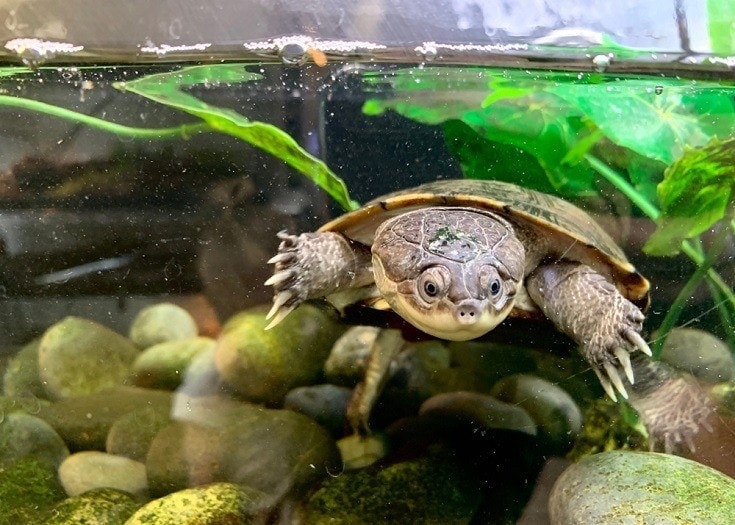
Conclusion
Since there are different types of turtles, determining their aquatic needs can often be confusing. Aquatic and semi-aquatic turtles spend plenty of time inside water and can bask on land for 6 to 8 hours.
Apart from that, they spend most of their time in the water since they need it to regulate their body temperatures and swallow food. They occasionally come outside water to gather oxygen and bask.
Aquatic turtles are messy and the best way to provide a constant supply of clean water to your pet turtle is to install a good filtration system. It will help remove bacteria, turtle feces, and other contaminants from your pet’s home.
See also:
- How Long Can a Turtle Go Without Basking? Vet-Reviewed Facts & FAQ
- Do Turtles Drink Water? Science-Based Facts & FAQ
Featured Image Credit to: Gabbie Berry, Shutterstock



